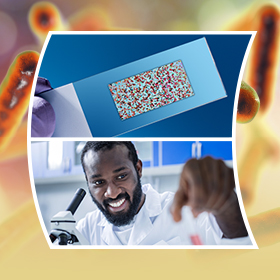
Advancing Environmental Health Sciences (EHS) encompasses the study of all levels of biological organization – molecular, biochemical pathway, cellular, tissue, organ, system, model organism, individual, and population – at all stages across the lifespan, from preconception through old age. EHS uses a rich, diverse, and constantly evolving set of observational, experimental, computational, and clinical approaches to explore the impacts of varying levels of exposure and susceptibility to such exposure. The support of novel, cutting-edge research approaches – high risk for high reward – is an important element of the Advancing EHS theme.
EHS research is aimed at discovering and explaining how factors, including chemical, physical, synthetic, and infectious agents; social stressors; diet and medications; and our own microbiomes, among others, affect biological systems. The knowledge generated by EHS, inclusive of interactions between humans, animals, and our natural and built environments, provides a critical component of our understanding of human health and disease.
Major research areas of interest and examples of their associated outcomes include, but are not limited to, developmental and behavioral impacts (reproductive disorders, autism); noncommunicable diseases (cancers, asthma, cardiovascular diseases, diabetes, metabolic disorders); neurodegenerative diseases (Parkinson’s, Alzheimer’s); and inflammation effects (autoimmune disorders).
Goals for Advancing Environmental Health Sciences
- Basic Biological Research: Research on the effects of the environment on biological systems and processes is central to EHS. It is important to understand the pathways within our cells and bodies that are the targets of environmental effects. Because evidence is increasing that early environmental exposures can impact the risk of disease later in life, long after the exposures have occurred, research on developmental processes will continue to be a priority.
- Individual Susceptibility: Individuals can, and do, respond in different biological ways to the same environmental exposure. EHS includes the study of individual susceptibility arising not only from the life stage, duration, and degree of exposure, but also from mechanisms, both genetic (alterations in the DNA sequence) and epigenetic (potentially heritable changes in gene expression that do not involve changes to the DNA sequence). Underlying health status and sex differences in response to exposures are also factors in susceptibility. Gene-environment interaction studies combine knowledge on environmental exposures and susceptibility to provide a more complete picture of a person’s risk of the effects of the environment on health.
- The Microbiome: The collection of microbes, such as bacteria, viruses, and fungi, living on and inside of our bodies, is known as the microbiome. Because the microbiome is a key intersection between the body and the environment, these microbes impact health in myriad ways and even affect how we are exposed and respond to certain environmental substances. NIEHS will expand its focus on the role of the microbiome as both a target and a mediator of environmental exposures.
- The Exposome: The exposome is the totality of environmental exposures experienced over an individual’s lifespan, and how those exposures affect health. Efforts will continue to advance exposure science and integrate the study of the exposome into EHS, including development of new technologies to identify exposures. Exposome assessment approaches will require integrating data across various omics, such as proteomics, metabolomics, and others, and are supported by the Data Science and Big Data goal.
- Co-exposures: People are exposed to a wide range of factors in the environment, both sequentially and simultaneously. Study of combined exposures, or mixtures, most closely replicate the human experience, and thus may provide unique insights to EHS. These studies are especially relevant for understanding the health impacts of environmental exposures, such as those related to climate or disasters. Study of co-exposures will continue to require the development of novel technological and quantitative approaches.
- Predictive Toxicology: Predictive toxicology remains a priority component of EHS. This approach takes advantage of basic knowledge of biological pathways to build a set of targeted, human-relevant computational, in silico, in vitro, or animal tests to predict adverse effects of a chemical exposure. Predictive toxicology advances include organ-on-a-chip technologies and systems biology platforms, among others.
- Data Science and Big Data: Development of innovative data science and data-driven approaches, including data sharing platforms, integration, and analytics, is integral to EHS specifically, and health initiatives generally. The broad use of big data frameworks and FAIR (findable, accessible, interoperable, and reusable) principles facilitate this development. Continued emphasis on partnerships within and outside NIH will help EHS capitalize on new discoveries and approaches.


